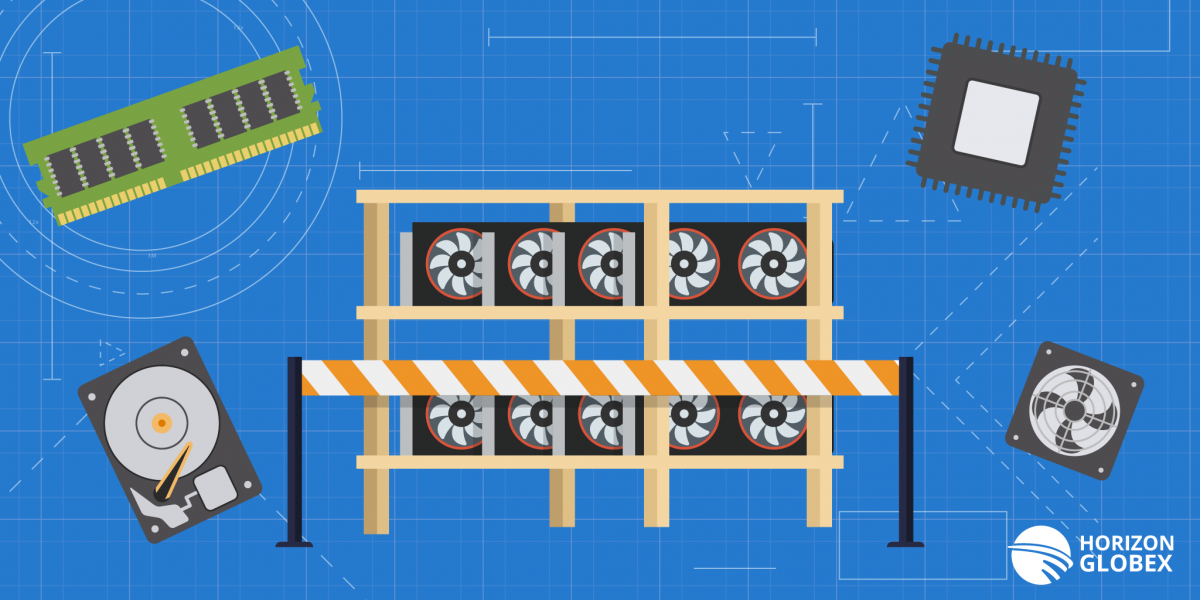By Ashish Rajendra Kumar Sai
If you have ever thought about building an ethereum mining rig, a big part of that is knowing what components you will need and that is what we are looking at with this blog.
In our blog from last week, we looked at the basics of a mining rig, which is a specialized computer with a highly efficient Graphics Processing Unit (GPU) – in case you missed it, you can read it here.
To build an ethereum mining rig, we will need all of the components of a conventional desktop computer, as well as good GPUs.
A traditional desktop computer has a CPU for normal computing operations, a RAM and a hard drive. CPU and RAM are mounted on a motherboard, which connects all of the components of the computer.
Even though most desktop providers provide a GPU with computers, these GPUs, for the most part, cannot be used for mining, due to poor performance.
One more point to note is that a mining rig designed to mine ethereum would not be ideal for mining other cryptocurrencies.
I am now going to take you through the components of a mining rig and how they differ from a conventional computer.
- CPU – Described as the brain of the computer, this is often considered to be the most critical component, but for the purpose of mining, GPUs do a better job, so we tend to get a CPU, which does the bare minimum, as we are not depending on it as much as the GPU. For mining ethereum, we recommend using an Intel Celeron or Intel i3 processor.
- RAM – Higher RAM does not mean that you get a better mining performance, so we recommend using anywhere between 4GB and 16GB of RAM. When deciding what size RAM best suits your needs, look at the operating system for mining and whether or not virtual memory is used. If you use ethOS, you can comfortably use a 4GB RAM, but if you use Windows without virtual memory, you should be using at least 8GB RAM. You can use RAM from any of the major suppliers, but it is always good practice to make sure it is compatible with your motherboard.
- Hard Disk – The size of the Hard Disk you use for mining very much depends on whether you intend to join a mining pool or if you will be mining on your own. If you are going to join a mining pool, you can use any 120 GB SSD, but if you are going to be mining on your own, take the size of the blockchain and rate of increase of the volume into consideration.
- Graphics Card – This is the most important part of a mining rig, so there are a few things to consider when buying one. You will need to take the hash rate and power consumption into consideration, as many graphics cards are quite expensive, but do not provide good hash rates – finding the perfect balance between price and performance is vital. We recommend using Gigabyte GeForce GTX 1070 or Radeon RX Vega 64 for ETH mining. Depending on the motherboard, you can have anywhere between one and eight graphics cards in your mining rig.
- Motherboard – This is what connects all of the components together and the mining rig is built onto the motherboard. PCI slots on our motherboard limit the number of GPUs that we can use in our mining rig. This limitation is why it’s essential to buy a motherboard that supports the desired amount of graphics cards. We recommend using MSI LGA1151 Z170A ATX for 6 GPU mining rig.
- PSU – The Power Supply Unit is used to regulate the power supply to all of the mining components. There is a huge variety of PSUs to choose from and this can seem overwhelming. A good rule to go by when picking the right PSU is to calculate the power required by individual components and then choose a PSU, which can supply more power than the sum of energy needed for all parts. If we have 4 GPU each demanding 200 Watts, we need a PSU that can provide more than 800 Watts plus the power requirement of other components, such as CPU and motherboard. For our advanced configuration, we recommend using Corsair RM Series RM1000X.
- Riser Cable – In order to simplify the construction of the mining rig, we will use riser cables to extend the PCI-e connection from GPUs to the motherboard. We recommend buying one riser cable for every GPU (Kyerivs PCIe Powered Riser Adapter Card Kit).
- Case – Unlike traditional personal computers, there is not an enclosing body for the mining rig. To place all of the components together, either construct a case or buy one online. The size and cost of a pre-made case vary depending on the quality of the case, but something as simple as a wooden crate can be used as the frame.
- Peripherals – To set things up, you will need a screen, mouse and keyboard. These components will not be critical once we are done with setting up our mining rig so if you have a PC you can use its peripherals to set things up.
Next Wednesday, in the next part of this technical blog about how to build a mining rig, we will look at the software we can use for mining.

